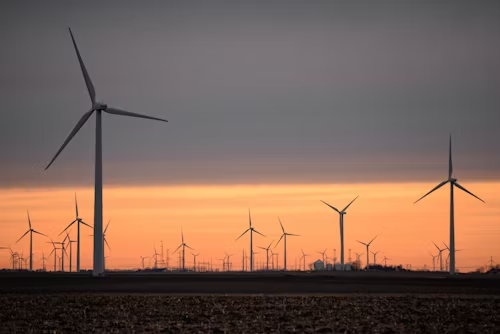With community consultations and stakeholder engagement being a key component of any UK renewable project proposal, creating a comprehensive stakeholder list is an essential first step in the project’s communications strategy.
Although the task might seem overwhelming at first, it can be streamlined with the right approach. Having worked on many a stakeholder list for renewable projects across the UK, Represent understands the importance of creating a robust stakeholder strategy for renewable clients.
Here are our top tips for compiling a stakeholder list that will effectively guide your renewables project from start to finish.
Identify key stakeholder groups
The first step is to determine who will be directly or indirectly impacted by your renewables project. Broadly categorise your stakeholders to ensure comprehensive coverage:
– Internal stakeholders:
– Company leadership & employees: Executives, project managers, and team members within your organisation.
– Investors & shareholders: Individuals or entities providing funding for the project.
– External stakeholders:
– Government & regulatory bodies.
– Local councils: The local government or authority in the project’s region.
– National government departments (such as The Department for Energy Security and Net Zero).
– Regulators: Agencies like Ofgem (Office of Gas and Electricity Markets) or the Environment Agency.
– Environmental Agencies: Groups such as Natural England, NatureScot, and the Scottish Environmental Protection Agency (if in Scotland).
– Local communities:
– Residents: Individuals living near the project site.
– Community groups: Local action groups and environmental advocacy organisations.
– Local businesses: Businesses operating close to the project site.
– Landowners & tenants: Individuals or entities owning or renting land affected by the project.
– Industry groups & partners:
– Renewable energy trade associations: Examples include RenewableUK, SolarUK, Scottish Renewables.
– Supply chain partners: Contractors, suppliers, and service providers for the project.
– Non-Governmental Organisations (NGOs)
– Environmental NGOs: Groups like Greenpeace UK, Friends of the Earth.
– Conservationists: Organisations focused on wildlife and habitat preservation.
– Media:
– Local and national press: Newspapers, online news outlets, and broadcasters (e.g., BBC, The Guardian, The Scotsman, Press & Journal, Herald (if Scotland)).
– Specialised trade media: Publications focused on renewables, sustainability, and energy policy (e.g., Energy Voice, Renews).
– Customers & the general public:
– Energy consumers: Individuals using the renewable energy produced.
– Renewable energy advocates: Groups supporting the transition to renewable energy – among your greatest allies!
– Educational institutions:
– Universities & research institutions – especially those focused on renewable energy and environmental science.
– Utilities & energy providers:
– Grid operators: For instance, National Grid ESO (Electricity System Operator).
– Energy retailers: Companies distributing or selling the renewable energy generated.
Categorise and Prioritise Stakeholders
Once you’ve identified your stakeholders, prioritise them based on their influence and interest in the project. At Represent, we use a bespoke stakeholder matrix to rank them effectively
Stakeholder hierarchy:
– High influence / High interest: Government bodies, regulators, investors.
– High influence / Low interest: National press, certain trade associations.
– Low influence / High interest: Local residents, environmental NGOs, community groups.
– Low influence / Low interest: General public, consumers not directly involved.
Understand stakeholder interests and communication needs
Tailor your communication strategy by understanding what each stakeholder group cares about:
– Local communities: Concerns may include environmental impact, noise, job creation, and local infrastructure.
– Regulators: Focus on compliance, safety standards, and impact assessments.
– Investors: Interested in financial performance, project milestones, and risk management.
– NGOs: Seek assurances about the project’s sustainability and impact on wildlife.
– Media: Require open, transparent and factual updates without greenwashing!
Draft the stakeholder list
Now that the detective work has been executed, you can organise your research data in a handy table or spreadsheet for clarity. We recommend that you include the following details:
– Stakeholder Name/Group
– Contact information
– Role in the project
– Interest level (High, medium, low)
– Influence level (High, medium, low)
– Preferred communication channel (email, press releases, meetings…)
Keep the comms running!
The work never stops at Represent, and this is especially true of stakeholder management – it’s an ongoing process! Develop a stakeholder communications plan to help you stay on top of stakeholder management that includes:
– Frequency of updates: Monthly, quarterly, or as needed.
– Key messages: Ensure consistent messaging across all stakeholder groups.
– Means of communication: Use press releases, newsletters, face-to-face meetings, or digital updates.
By identifying, categorising, and prioritising your stakeholders, you’ll be well-positioned to manage communications effectively and ensure your renewable project’s success.
For personalised advice on stakeholder management, please feel free to reach out to the experts at Represent. We’d love to help make your next big stakeholder engagement project a success!
Ready to engage with key target audiences? Contact Represent for tailored support and guidance on your renewables project.


